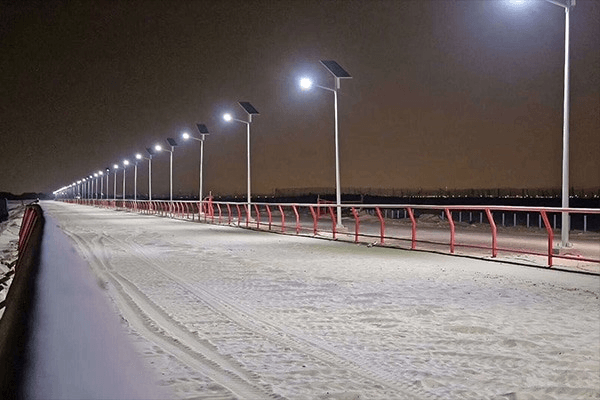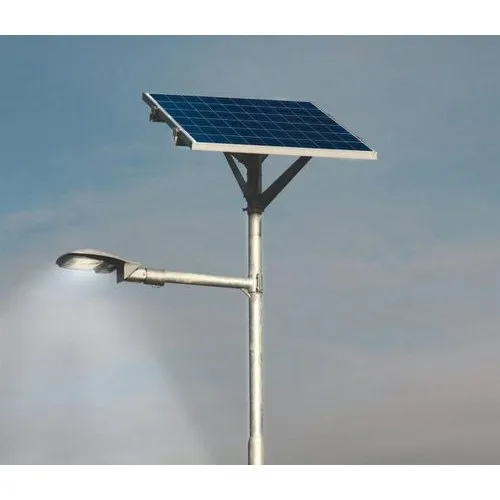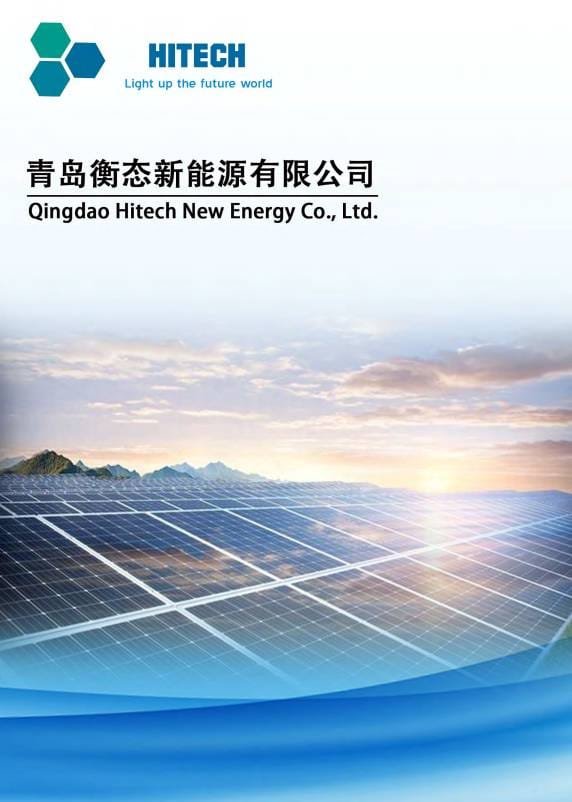Many people hesitate to invest in integrated solar street lights due to common misconceptions. But how much of what we hear is actually true?
The reality is that modern integrated solar street lights are highly efficient, durable, and cost-effective. They work in various weather conditions, provide long-term savings, and require minimal maintenance.
Let’s debunk some of the most common myths and uncover the facts about integrated solar street lights.
Myth 1: Solar Street Lights Don’t Work on Cloudy or Rainy Days
Many believe that solar street lights stop working when the sun isn’t shining. But is that really the case?
The Truth
- Solar panels still generate power – Even under cloudy conditions, they absorb diffused sunlight.
- High-capacity batteries store energy – Advanced lithium batteries ensure power is available even during long rainy periods.
- Smart controllers optimize energy use – Adaptive lighting adjusts brightness to extend battery life.
Solution for Low-Sunlight Areas
✔ Use monocrystalline solar panels for better low-light performance.
✔ Install lights at optimized angles for maximum exposure.
✔ Choose models with large battery storage for extended backup power.
Myth 2: Solar Street Lights Are Not Bright Enough

Some think that solar street lights are too dim compared to traditional electric lights.
The Truth
- LED technology provides high brightness – Modern LEDs offer up to 200 lumens per watt, making them as bright as or even brighter than traditional lights.
- Smart brightness control enhances efficiency – Motion sensors adjust brightness based on activity, saving energy while maintaining illumination.
- Multiple wattage options available – Different models cater to various brightness needs.
How to Ensure Optimal Brightness
✔ Choose high-lumen LED chips for maximum output.
✔ Use smart dimming to balance energy consumption and illumination.
✔ Properly space lights to ensure even coverage.
Myth 3: Solar Street Lights Require Frequent Maintenance
Are integrated solar street lights high-maintenance? Many assume they require constant repairs.
The Truth
- Minimal maintenance is needed – Unlike traditional street lights, solar models don’t have underground wiring that can fail.
- Durable, weather-resistant materials – Modern solar lights use corrosion-resistant aluminum and waterproof components.
- Long-lasting lithium batteries – These require replacement only every 5–10 years.
Best Practices for Longevity
✔ Clean solar panels regularly to maintain efficiency.
✔ Inspect connections and battery status annually.
✔ Use high-quality components to reduce long-term maintenance.
Myth 4: Solar Street Lights Are Too Expensive

Is the initial cost of solar street lights too high to be a worthwhile investment?
The Truth
- No electricity bills – Solar street lights generate their own power, eliminating ongoing energy costs.
- Lower installation expenses – No need for trenching or complex wiring reduces setup costs.
- Fast return on investment – Savings on energy and maintenance lead to cost recovery within a few years.
Financial Benefits
| Expense | Traditional Street Lights | Integrated Solar Street Lights |
|---|---|---|
| Electricity Costs | Ongoing monthly bills | Zero cost after installation |
| Installation Costs | Expensive wiring & labor | Quick setup with no trenching |
| Maintenance Costs | Frequent repairs | Minimal upkeep required |
✔ Opt for high-efficiency models for faster payback.
✔ Consider long-term savings, not just upfront costs.
✔ Take advantage of government incentives for solar adoption.
Myth 5: Solar Street Lights Can’t Withstand Harsh Weather
Can solar street lights handle extreme temperatures, strong winds, or heavy snow?
The Truth
- Designed for durability – Waterproof, wind-resistant, and temperature-resistant materials ensure longevity.
- Angled solar panels prevent snow accumulation – Proper positioning helps panels stay clear.
- Wind-resistant mounting structures – Reinforced poles and fixtures withstand storms.
Weatherproofing Features
✔ Use IP65+ rated waterproof and dustproof enclosures.
✔ Insulate batteries for extreme temperature conditions.
✔ Choose models with reinforced mounting for windy areas.
Conclusion

Many misconceptions about integrated solar street lights stem from outdated technology and a lack of understanding. Modern solar street lights are bright, durable, cost-effective, and capable of functioning in various weather conditions. By embracing solar lighting solutions, governments and businesses can benefit from long-term energy savings and sustainable urban development.


